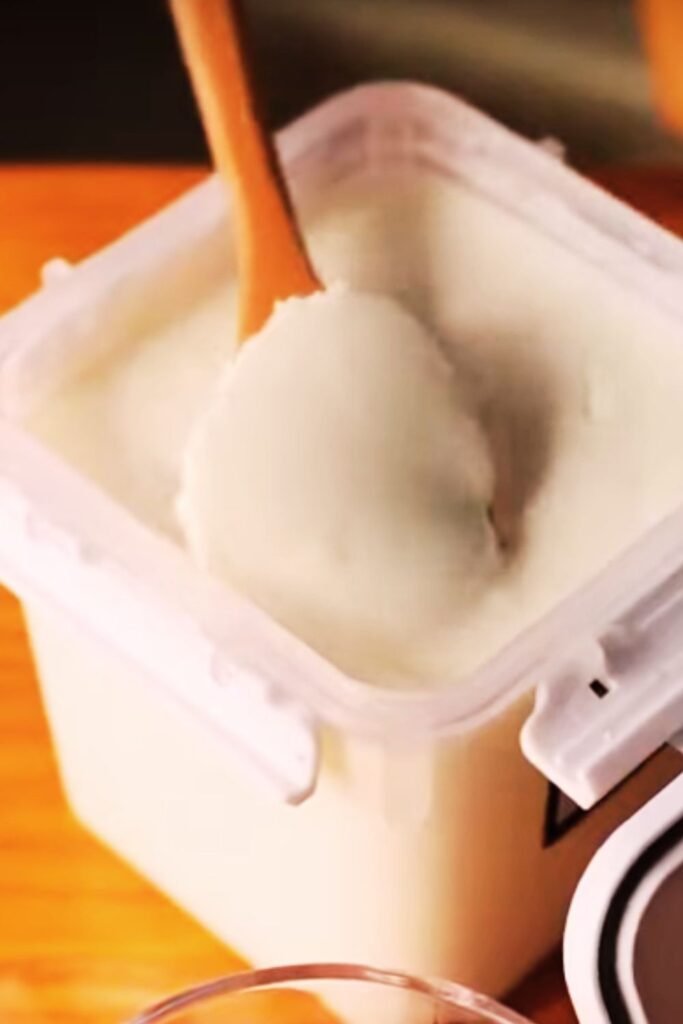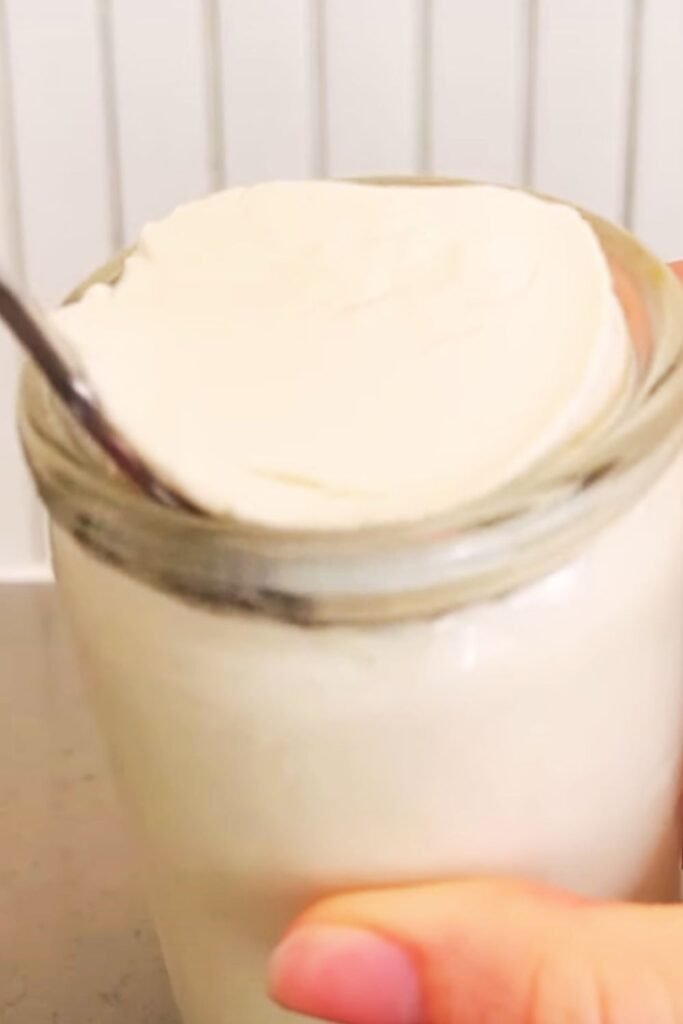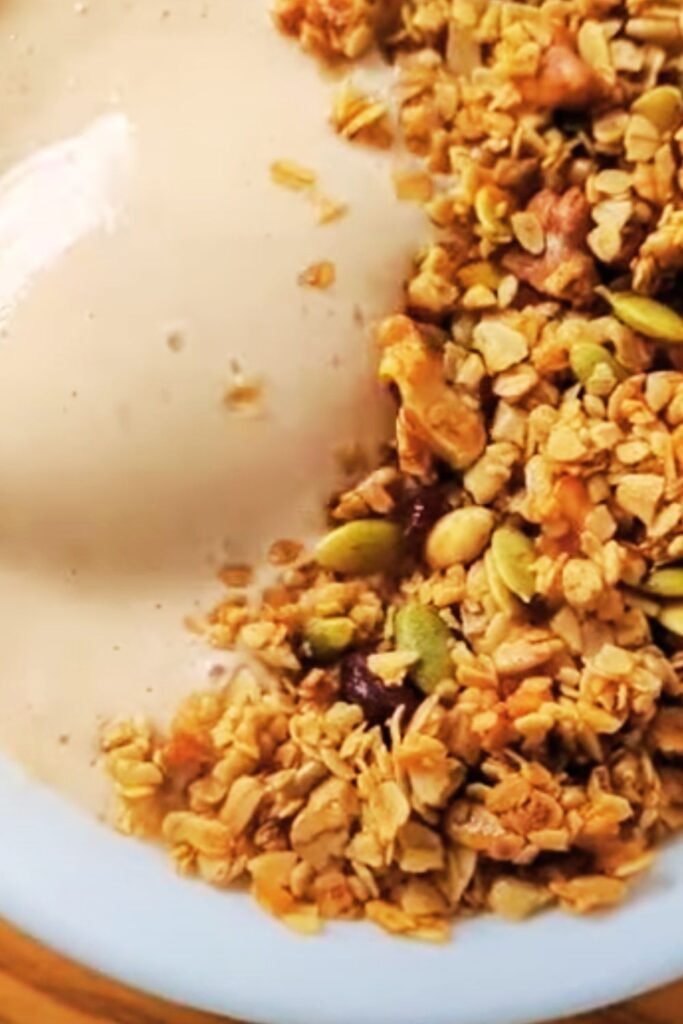Making your own cultured tofu yogurt at home is simpler than you might think, and the results are absolutely worth it. I’ve been perfecting this recipe for years, and I’m excited to share my tried-and-true method with you today. This dairy-free alternative delivers that tangy yogurt flavor you crave while being completely plant-based. Let’s dive into this wonderful world of fermentation!
What is Cultured Tofu Yogurt?
Cultured tofu yogurt is exactly what it sounds like – a yogurt-like product made from tofu that’s been cultured with beneficial bacteria. Unlike traditional dairy yogurt, this version uses tofu as its base, making it perfect for vegans, those with lactose intolerance, or anyone looking to reduce their dairy consumption.
The fermentation process transforms bland tofu into a tangy, creamy treat that mimics the flavor profile and texture of traditional yogurt. Best of all, you can control exactly what goes into it – no artificial preservatives, stabilizers, or excessive sugar.
Why Make Your Own Tofu Yogurt?
Before we jump into the recipe, let me share why I’m so passionate about homemade tofu yogurt:
- Cost-effective: Much cheaper than store-bought non-dairy yogurts
- Customizable: Control the tanginess, sweetness, and consistency
- Probiotic-rich: Contains beneficial bacteria for gut health
- Versatile: Use it in both sweet and savory applications
- Sustainable: Less packaging waste than store-bought options
- Clean ingredients: No additives, fillers, or strange ingredients you can’t pronounce
The Science Behind Fermentation
I find the science of fermentation absolutely fascinating. When we culture tofu, we’re essentially creating an environment where beneficial bacteria can thrive. These bacteria consume carbohydrates and produce lactic acid, which gives yogurt its characteristic tang.
In traditional yogurt making, milk proteins coagulate in response to acid production, creating yogurt’s thick texture. With tofu, we’re starting with an already coagulated product, so our focus is primarily on developing flavor through fermentation rather than changing texture.
The probiotic bacteria commonly used in yogurt fermentation include:
| Bacteria | Role in Fermentation | Benefits |
|---|---|---|
| Lactobacillus bulgaricus | Primary starter culture | Produces lactic acid, contributes to tanginess |
| Streptococcus thermophilus | Works synergistically with L. bulgaricus | Improves texture and flavor |
| Lactobacillus acidophilus | Secondary culture | Enhances probiotic content, aids digestion |
| Bifidobacterium bifidum | Supplementary culture | Supports immune function, improves gut health |
Ingredients You’ll Need
Let’s gather everything needed for this recipe:
- 16 oz (454g) firm or extra-firm tofu (not silken)
- 2 tablespoons lemon juice, freshly squeezed
- 1 tablespoon nutritional yeast
- 1 teaspoon apple cider vinegar (with “the mother”)
- 2 tablespoons coconut cream (the solid part from a can of full-fat coconut milk)
- 1 capsule vegan probiotic (containing at least 10 billion CFU)
- 1 teaspoon vanilla extract (optional, for sweet applications)
- 1 tablespoon maple syrup or agave nectar (optional, for sweetness)
- ¼ teaspoon salt
Equipment Required
I’ve found these tools essential for successful tofu yogurt:
- High-powered blender or food processor
- Clean glass jar with lid (sterilized)
- Cheesecloth or nut milk bag
- Rubber bands
- Yogurt maker, Instant Pot with yogurt function, or warm spot in your kitchen
- Thermometer (optional but helpful)
Step-by-Step Instructions
1. Prepare the Tofu
The first step is crucial for getting that perfect yogurt texture:
- Remove tofu from packaging and drain thoroughly
- Press tofu for at least 30 minutes to remove excess water (I place the tofu block between clean kitchen towels with a heavy book on top)
- Once pressed, crumble the tofu into chunks
Pro tip: The drier your tofu, the thicker your final yogurt will be. I sometimes press mine for up to an hour for an extra-thick result.
2. Blend Ingredients
Now it’s time to transform those simple ingredients into something magical:
- Place pressed tofu chunks in your blender
- Add lemon juice, nutritional yeast, apple cider vinegar, and coconut cream
- If making a sweet version, add vanilla extract and sweetener of choice
- Add salt
- Blend until completely smooth, stopping to scrape down the sides as needed
- The mixture should have a smooth, creamy consistency similar to traditional yogurt
3. Add Probiotics
This is where the transformation happens:
- Allow the blended mixture to cool if it’s warmed up from blending
- Open the probiotic capsule and empty the powder into the mixture (discard the empty capsule)
- Pulse blend briefly just to incorporate (excessive blending can damage the probiotics)
Important: Make sure your probiotic is at room temperature, not straight from the refrigerator, as cold temperatures can shock the bacteria.
4. Transfer to Jar and Culture
Now we create the perfect environment for those beneficial bacteria to work their magic:
- Pour the mixture into your sterilized glass jar
- Cover with cheesecloth or a clean kitchen towel (not an airtight lid, as the culture needs to breathe)
- Secure with a rubber band
- Place in a warm location (85-110°F/29-43°C is ideal)

5. Fermentation Options
Choose the method that works best for you:
Yogurt Maker Method:
- Follow your yogurt maker’s instructions
- Culture for 8-12 hours
Instant Pot Method:
- Place jar on the trivet inside your Instant Pot
- Add 1 cup of water to the bottom of the pot
- Use the “Yogurt” setting on low for 8-12 hours
Oven Method with Light:
- Turn your oven light on (do not heat the oven)
- Place jar in the oven and close the door
- The light bulb will create enough warmth for culturing
- Culture for 8-12 hours
Warm Kitchen Spot:
- Find the warmest spot in your kitchen (near a radiator or on top of the refrigerator)
- Place wrapped in a towel for insulation
- Culture for 12-24 hours (may take longer due to lower temperature)
6. Check and Refrigerate
Time to check on your creation:
- After the culturing period, your yogurt should smell tangy and yogurt-like
- Taste a small amount – it should be pleasantly sour
- If it’s not tangy enough, continue fermenting for a few more hours
- Once satisfied with the flavor, seal with an airtight lid
- Refrigerate for at least 4 hours to halt fermentation and allow flavors to develop further
Fermentation Time Guide:
- 8 hours: Mild tanginess
- 12 hours: Medium tanginess (my personal preference)
- 18+ hours: Strong tanginess, more similar to Greek yogurt

Flavor Variations
One of the joys of making your own tofu yogurt is customizing it to your taste preferences. Here are some of my favorite variations:
Sweet Options
- Berry Bliss: Swirl in ¼ cup berry compote and 1 tablespoon maple syrup
- Tropical Dream: Add ¼ cup diced mango and 2 tablespoons shredded coconut
- Vanilla Bean: Scrape one vanilla bean pod into the mixture before fermenting
- Cinnamon Swirl: Add ½ teaspoon ground cinnamon and 2 tablespoons date paste
Savory Options
- Mediterranean: Mix in minced garlic, dried dill, and cucumber for a tzatziki-inspired spread
- Spicy Blend: Add finely diced jalapeño, lime juice, and cilantro
- Herb Garden: Incorporate chopped fresh herbs like chives, parsley, and basil
- Curry Infusion: Add ¼ teaspoon each of curry powder, turmeric, and a pinch of black pepper
Serving Suggestions
I love how versatile tofu yogurt is. Here are some delicious ways to enjoy your creation:
Breakfast Ideas
- Layer with granola and fresh fruit for a beautiful parfait
- Blend into morning smoothies for added creaminess and probiotics
- Dollop onto warm oatmeal with a drizzle of maple syrup
- Serve alongside whole-grain waffles with fresh berries
Lunch and Dinner Applications
- Use as a base for creamy salad dressings
- Dollop onto spicy curries to cool the heat
- Spread on toast and top with roasted veggies
- Mix with herbs for a baked potato topping
Snack Time
- Serve with fresh fruit for dipping
- Use as a base for healthy dips
- Freeze in popsicle molds with fruit for a refreshing treat
- Whip into a fluffy fruit dip with a touch of sweetener

Troubleshooting Tips
Even with the best intentions, fermentation can sometimes be tricky. Here are solutions to common issues:
| Problem | Possible Cause | Solution |
|---|---|---|
| Yogurt isn’t tangy | Temperature too low, insufficient time, inactive probiotics | Increase fermentation time, ensure warm environment, check probiotic expiration date |
| Too sour/tangy | Fermented too long | Reduce fermentation time in future batches, add sweetener to balance current batch |
| Thin consistency | Insufficient tofu pressing, wrong tofu type | Press tofu longer, use extra-firm tofu, add thickeners like agar agar |
| Strange smell | Contamination | Ensure all equipment is properly sterilized, discard and start fresh |
| Separation occurs | Normal part of fermentation | Stir well before serving or strain through cheesecloth for thicker consistency |
| Mold on surface | Contamination, too long fermentation | Discard entire batch, ensure cleanliness, reduce fermentation time |
Storage and Shelf Life
To keep your tofu yogurt fresh and delicious:
- Always store in a clean, airtight container in the refrigerator
- Consume within 5-7 days for best flavor and texture
- Stir well before serving as some separation is normal
- Avoid contaminating with used utensils when serving
- Do not freeze as this will damage the probiotic cultures and alter the texture
Nutritional Benefits
Cultured tofu yogurt isn’t just delicious—it’s nutritious too:
| Nutrient | Amount (per 1/2 cup serving) | Benefit |
|---|---|---|
| Protein | 8-10g | Muscle maintenance and satiety |
| Calcium | 15-20% DV | Bone health |
| Probiotics | 10+ billion CFU | Gut health and immune function |
| Iron | 6-8% DV | Oxygen transport in blood |
| Vitamin D | Varies by tofu brand | Bone health, immune function |
| Isoflavones | 25-30mg | Plant compounds with various health benefits |
Advanced Tips for Tofu Yogurt Masters
Once you’ve mastered the basic recipe, try these advanced techniques:
- Greek-Style Thickness: After fermentation, line a fine mesh strainer with cheesecloth, pour in your yogurt, and let it drain in the refrigerator for 2-4 hours to remove excess liquid.
- Continuous Culturing: Save 2 tablespoons from your current batch to use as a starter for your next batch, reducing the need for probiotic capsules each time.
- Temperature Control: Invest in an inexpensive yogurt maker or fermentation station for consistent results.
- Flavor Development: Try adding flavor ingredients before fermentation for deeper flavor infusion, like vanilla bean, lemon zest, or herbs.
- Thickening Agents: Experiment with natural thickeners like agar agar (1/4 teaspoon dissolved in hot water) or tapioca starch (1 teaspoon mixed with water).
Questions & Answers
Is homemade tofu yogurt safe to eat? Yes, cultured tofu yogurt is safe when prepared with clean equipment and proper techniques. The acidic environment created during fermentation actually helps prevent harmful bacteria growth. However, if you notice any odd colors, strange smells, or mold, discard the batch immediately.
Can I use silken tofu instead of firm? While you technically can use silken tofu, I don’t recommend it for this recipe. Silken tofu will create a much runnier yogurt that’s more like a kefir drink than a spoonable yogurt. Stick with firm or extra-firm tofu for the best texture.
How do I know if my yogurt has properly cultured? Properly cultured tofu yogurt will have a distinctly tangy smell and taste, similar to dairy yogurt. The texture might become slightly thicker, and small bubbles may form as the bacteria produce gas during fermentation. Trust your senses—if it smells pleasant and yogurt-like, it’s likely successful.
Can I use any type of probiotic capsule? For best results, use a high-quality vegan probiotic capsule containing Lactobacillus species. Check that it has at least 10 billion CFU (colony-forming units) per serving and doesn’t require refrigeration, which often indicates hardier strains.
What if I don’t have a warm spot for fermentation? If you don’t have a yogurt maker, Instant Pot, or naturally warm spot, try creating a makeshift incubator. Wrap your jar in a towel, place it in a cooler with a bottle of warm water, and refresh the warm water every few hours. Or use a heating pad on its lowest setting, wrapped in towels for insulation.
Can I double or triple the recipe? Absolutely! This recipe scales beautifully. Just maintain the same ratios of ingredients, including the probiotic culture. You might need to blend in batches if your blender is small.
Is it normal for the yogurt to separate during fermentation? Yes, some separation is normal during fermentation. You’ll often see a thin liquid (whey) on top or around the edges. Simply stir it back in before serving, or strain it off for a thicker consistency.
Can I use this yogurt as a starter for my next batch? Yes! Save about 2 tablespoons of your current batch to use as a starter for your next batch. Mix it into your fresh tofu mixture in place of the probiotic capsule. You can usually do this for 5-7 generations before needing to start fresh with a new probiotic capsule.
Why use nutritional yeast in the recipe? Nutritional yeast adds a subtle umami depth that helps mimic the complex flavor profile of dairy yogurt. It’s optional but recommended for the most authentic flavor.
Can I make this yogurt without added fat? Yes, you can omit the coconut cream if you prefer a fat-free version. The texture won’t be quite as creamy, but the fermentation process will still work just fine.
Final Thoughts
Making your own cultured tofu yogurt at home is not just economical and healthy—it’s deeply satisfying. There’s something magical about harnessing the power of beneficial bacteria to transform simple ingredients into something deliciously complex.
I encourage you to experiment with this recipe, adjusting fermentation times and flavorings to match your preferences. The beauty of homemade fermentation is that each batch is unique, reflecting the conditions in your kitchen and the specific ingredients you use.
Remember that fermentation is both science and art. Be patient with yourself and the process. Even if your first batch isn’t perfect, you’ll learn something valuable for your next attempt. Before long, you’ll be creating tofu yogurt that rivals any store-bought version—tailored perfectly to your taste and made with ingredients you can feel good about.
Happy fermenting, and enjoy your journey into the wonderful world of homemade cultured foods!